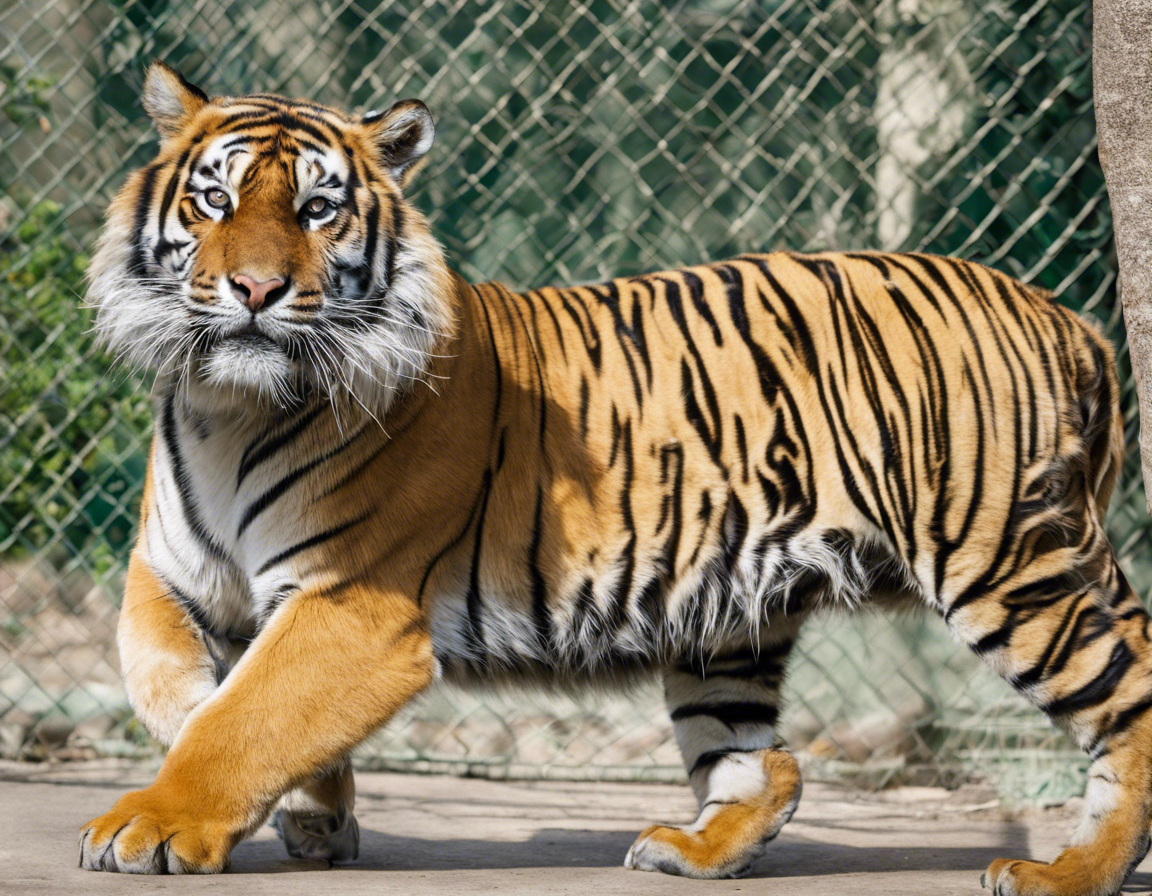In modern society, zoos serve as popular attractions where people can observe a wide variety of animals up close. While some argue that zoos play a crucial role in conservation efforts and education, others raise ethical concerns about keeping wild animals in captivity, particularly large predators like tigers. This article will delve into the complexities of tigers in zoos, examining the various aspects of their lives, the impact of captivity on their well-being, and the ongoing debate surrounding their presence in captivity.
The Nature of Tigers
Tigers, the largest of the big cats, are majestic creatures known for their striking appearance and impressive physical abilities. In the wild, tigers inhabit diverse ecosystems ranging from dense forests to grasslands across Asia. These solitary hunters are powerful apex predators, essential for maintaining the ecological balance in their natural habitats. With their distinctive coat patterns and stealthy hunting tactics, tigers have captured the imagination of people around the world.
Tigers in Captivity
Tigers held in captivity are often housed in zoos, wildlife sanctuaries, or breeding facilities. While some argue that captivity provides a safe environment for tigers and facilitates research and conservation efforts, others question the ethical implications of confining these wild animals for human entertainment. It is essential to evaluate the various factors that influence the lives of tigers in captivity:
Habitat and Enrichment
One of the primary concerns for tigers in captivity is the size and quality of their enclosures. Tigers are territorial animals that require ample space to roam, hunt, and exhibit natural behaviors. Inadequate habitat conditions can lead to stress, boredom, and health issues among captive tigers. Providing enrichment activities such as climbing structures, scent trails, and puzzle feeders is crucial to stimulate the tigers mentally and physically.
Diet and Nutrition
Maintaining a proper diet is essential for the health and well-being of tigers in captivity. Zoo nutritionists carefully plan the diets of captive tigers to ensure they receive the necessary nutrients and vitamins. A well-balanced diet helps replicate the tigers’ natural feeding behaviors and contributes to their overall fitness and vitality.
Veterinary Care
Regular veterinary care is vital for monitoring the health of tigers in captivity. Zoos employ veterinarians specialized in exotic animal medicine to conduct routine check-ups, administer vaccinations, and treat any illnesses or injuries. Prompt medical attention is crucial in ensuring the welfare of captive tigers and addressing any health concerns promptly.
Breeding Programs
Many zoos participate in breeding programs for endangered tiger species to help bolster their populations. Managed breeding efforts aim to maintain genetic diversity and prevent inbreeding among captive tigers. While some view breeding programs as a crucial conservation strategy, critics argue that breeding tigers in captivity may not adequately address the root causes of their decline in the wild.
Ethical Considerations
The debate surrounding the ethics of keeping tigers in captivity is multifaceted and complex. It raises questions about animal welfare, conservation priorities, and the role of zoos in modern society. Some of the key ethical considerations include:
Animal Welfare
Central to the discussion is the welfare of captive tigers. Critics argue that confining tigers to limited spaces deprives them of their natural habitat and freedom. Behavioral issues such as pacing, stereotypic behaviors, and aggression may arise from the stress of captivity. Advocates emphasize the importance of ensuring that captive tigers receive proper care, enrichment, and living conditions that prioritize their well-being.
Conservation Impact
Proponents of zoos argue that captive breeding programs play a crucial role in conservation efforts for endangered tiger species. By maintaining viable populations in captivity, zoos can serve as genetic reservoirs and potentially reintroduce tigers into the wild in the future. However, the effectiveness of captive breeding programs in restoring wild tiger populations remains a subject of debate among conservationists.
Frequently Asked Questions (FAQs)
1. Are tigers better off in the wild or in captivity?
Answer: Tigers are best suited for their natural habitat in the wild, where they can roam, hunt, and exhibit their natural behaviors freely.
2. Do zoos help conserve tiger species?
Answer: Zoos participate in breeding programs to conserve endangered tiger species, but the effectiveness of these programs in restoring wild populations is debated.
3. How do zoos ensure the well-being of tigers in captivity?
Answer: Zoos prioritize providing adequate habitat, enrichment, diet, veterinary care, and behavioral management to ensure the welfare of captive tigers.
4. Why do tigers exhibit stereotypic behaviors in captivity?
Answer: Tigers in captivity may display stereotypic behaviors due to stress, boredom, or inadequate living conditions that do not meet their natural needs.
5. What is the future of tigers in zoos?
Answer: The future of tigers in zoos depends on ongoing efforts to enhance their welfare, address ethical concerns, and contribute effectively to conservation initiatives for wild tiger populations.
In conclusion, the presence of tigers in zoos raises important questions about ethics, conservation, and animal welfare. While captive environments can provide opportunities for research, education, and species preservation, it is crucial to prioritize the well-being and natural behaviors of tigers in captivity. By striving to create enriching environments, supporting conservation efforts, and engaging in open dialogue about the role of zoos, we can work towards a more sustainable and ethical future for tigers in captivity.
